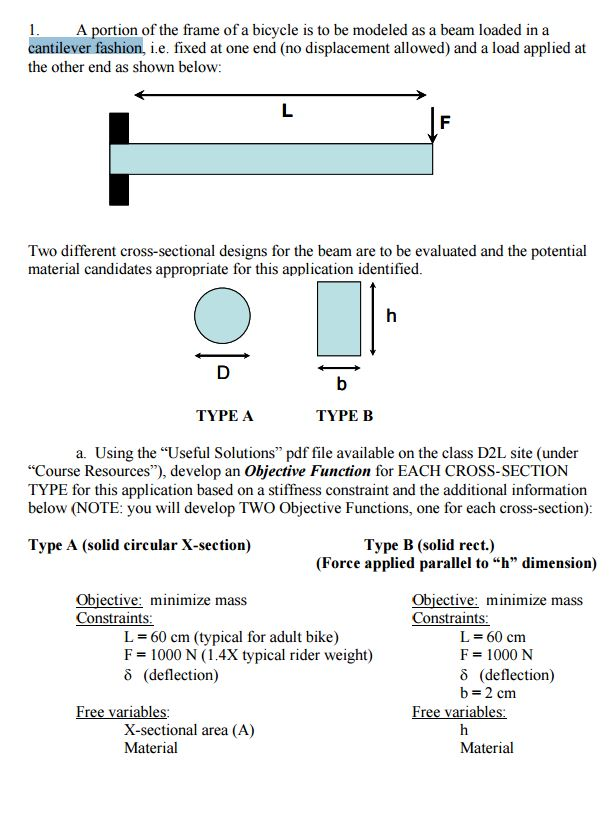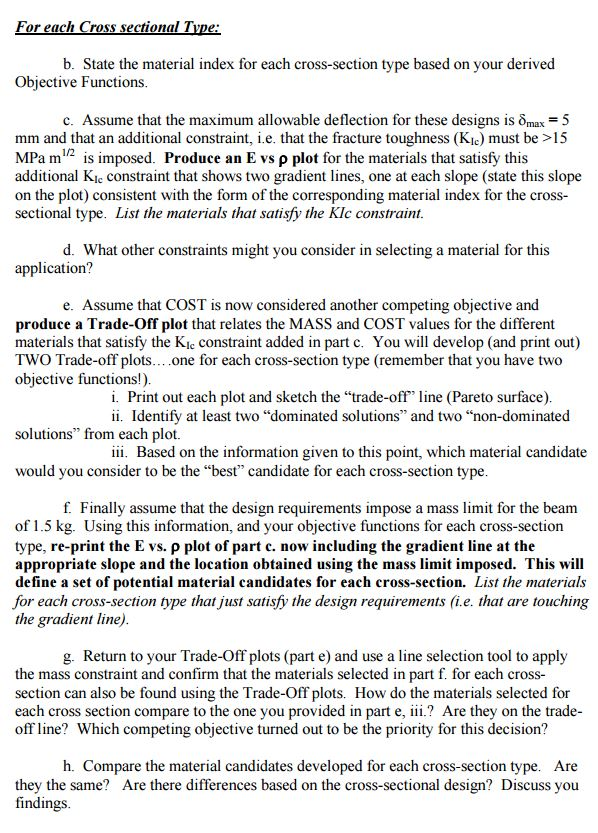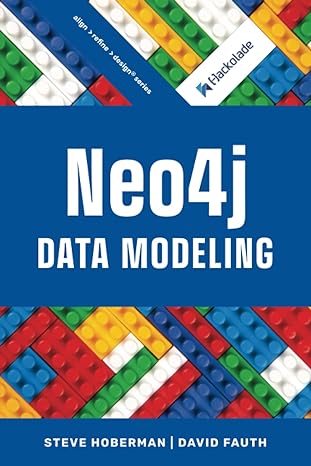Please Help!


A portion of the frame of a bicycle is to be modeled as a beam loaded in a cantilever fashion, i.e. fixed at one end (no displacement allowed) and a load applied at the other end as shown below: Two different cross-sectional designs for the beam are to be evaluated and the potential material candidates appropriate for this application identified TYPE A TYPE B a. Using the "Useful Solutions" pdf file available on the class D2L site (under "Course Resources"), develop an Objective Function for EACH CROSS-SECTION TYPE for this application based on a stiffness constraint and the additional information below (NOTE: you will develop TWO Objective Functions, one for each cross-section) Type A (solid circular X-section) Type B (solid rect.) (Force applied parallel to "h" dimension) Objective: minimize mass Constraints Objective: minimize mass Constraints L 60 cm (typical for adult bike) F 1000 N (1.4X typical rider weight) 8 (deflection) L = 60 cm F = 1000 N 8 (deflection) b 2 cm X-sectional area (A) Material Material or each Cross sectional T b. State the material index for each cross-section type based on your derived Objective Functions c. Assume that the maximum allowable deflection for these designs is max 5 mm and that an additional constraint, i.e. that the fracture toughness (Ki) must be >15 MPa m1/2 is imposed. Produce an E vs plot for the materials that satisfy this additional Kie constraint that shows two gradient lines, one at each slope (state this slope on the plot) consistent with the form of the corresponding material index for the cross- sectional type. List the materials that satisfy the KIc constraint d. What other constraints might you consider in selecting a material for this application? e. Assume that COST is now considered another competing objective and produce a Trade-Off plot that relates the MASS and COST values for the different materials that satisfy the Kie constraint added in part c. You will develop (and print out) TWO Trade-off plots... .one for each cross-section type (remember that you have two objective functions!). i. Print out each plot and sketch the "trade-off" line (Pareto surface). ii. Identify at least two "dominated solutions" and two "non-dominated solutions" from each plot. ii. Based on the information given to this point, which material candidate would you consider to be the "best" candidate for each cross-section type f Finally assume that the design requirements impose a mass limit for the beam of 1.5 kg. Using this information, and your objective functions for each cross-section type, re-print the E vs. p plot of part c. now including the gradient line at the appropriate slope and the location obtained using the mass limit imposed. This will define a set of potential material candidates for each cross-section. List the materials for each cross-section type that just satisfy the design requirements (i.e. that are touching the gradient line) g. Return to your Trade-Off plots (part e) and use a line selection tool to apply the mass constraint and confirm that the materials selected in part f. for each cross section can also be found using the Trade-Off plots. How do the materials selected for each cross section compare to the one you provided in part e, iii.? Are they on the trade- off line? Which competing objective turned out to be the priority for this decision? h. Compare the material candidates developed for each cross-section type. Are Are there differences based on the cross-sectional design? Discuss you they the same? findings








